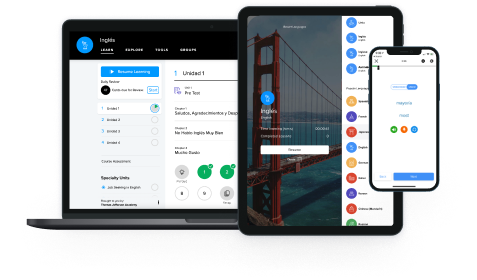Some descriptive adjectives can be used before the noun, under certain conditions. Check out the last section of this post for some examples!

Where to put Brazilian Portuguese adjectives in a sentence?
in Brazilian Portuguese are usually placed after the they describe. For example:
a comida deliciosa
the delicious food
However, there are a few types of adjectives in Brazilian Portuguese that must appear before the noun. Also, in a few other cases, there are adjectives that can appear before or after the noun, either as a stylistic choice or to change the meaning. Are you curious to learn more? Keep reading!
What are the basic grammar rules for adjectives in Brazilian Portuguese?
Most “classic” adjectives appear after the noun in Brazilian Portuguese and agree with the noun in and .
a montanha alta
the high mountain
lit. the mountain high
o carro confortável
the comfortable car
lit. the car comfortable
In general, this placement rule applies to descriptive adjectives (adjectives that give a specific or restrictive quality).
✅ a maçã vermelha
❌ a vermelha maçã
the red apple
Exception!
Below are some examples the more general kinds of descriptive adjectives:
Colors
a banana amarela
the yellow banana
Dimensions/directions
o homem baixo
the short man
Shapes/forms
o bolo redondo
the round cake
Materials*
a sacola plástica
the plastic bag
Texture
o chão molhado
the wet floor
States/conditions
o caderno rasgado
the torn notebook
Sources
a água mineral
the spring water
Nationalities
o homem brasileiro
the Brazilian man
Ideologies
os estudos budistas
the Buddhist studies
Tip
In English, we often use noun modifiers, instead of adjectives, to describe the source of a noun or the material it is made out of (e.g. “apple sauce” or “house cat”). In these cases, you’ll use the following structure in Brazilian Portuguese: noun + de(of) + noun
bolo de chocolate
chocolate cake
sapatos de couro
leather shoes
However, adjectives that are not descriptive adjectives may follow different placement rules. Let’s look at some adjectives that must go before the adjective.
Which types of adjectives must go before the noun?
In Brazilian Portuguese, there are also a few types of adjectives that must be placed before the nouns they modify: demonstrative adjectives, superlative adjectives, quantifiers, cardinal numbers, ordinal numbers. Two other kinds of adjectives, indefinite and possessive adjectives, also usually come before the noun, but there are some cases where they may follow it.
For example:
✅ este dia
❌ dia este
this day
Let’s review each of these kinds of adjectives, along with an example:
Demonstrative adjectives → words like “this” or “that”
este computador
this computer
Superlative adjectives → words like “cleanest” or “least impressive”
o melhor computador
the best computer
Important
Note that the comparative adjectives melhor(better), pior(worse), maior(bigger), and menor(smaller) can come either before or after the noun:
comparative adjectivenounEles esperam por melhores resultados.
They wait for better results.
Eles esperam por dias melhores.
They wait for better days.
Quantifiers → words that give a general quantity, like “many” or “a few”
poucos computadores
some computers
Cardinal Numbers → counting numbers, like “six” or “three hundred”
dois computadores
two computers
Ordinals → ordering numbers, like “fifth” or “first”
o segundo computador
the second computer
Exception!
Ordinals used to name royals or popes usually go after the noun:
Dom Pedro primeiro
Don Pedro I
Important
In writing, it is also possible to place adjectives between commas. This is a stylistic choice and can be done to focus attention on the noun.
A menina, feliz, caminhava no parque.
The girl, who was happy, was walking in the park.
Os carros, rápidos, passavam pela estrada.
The cars, which were fast, passed along the road.
In the next section, you’ll see that indefinite adjectives and possessive adjectives are also commonly placed before the noun, with some exceptions.
Where to put indefinite and possessive adjectives in a sentence?
Most of the time, possessive adjectives, like nosso(our), and indefinite adjectives, like muito(lots of) are placed before the noun; however, they can sometimes be placed after the noun for emphasis.
meu computador
my computer
computador meu
my computer
nenhum computador
any computer
computador nenhum
any computer
Here’s an example of the contrast in a complete sentence:
Não tenho nenhum computador.
I don't have any computer.
→ commonNão tenho computador nenhum.
I really don't have any computer.
→ emphasis
Exception!
The indefinite adjectives outro, outra(other) and outros, outras(others) can only be placed before the noun.
❌ dia outro
✅ outro dia
another day
When can descriptive adjectives come before the noun?
Though descriptive adjectives in Brazilian Portuguese usually follow the noun they describe, there are a few cases where they may come before the noun instead. This change in position can signify a difference in literal meaning, a difference between a subjective vs. objective description, or a difference in emphasis.
Let’s look at some examples!
To signal a difference in literal meaning
The placement of some adjectives (before or after the noun) can signify a difference in literal meaning. In this case you may translate the adjective with a different word depending on whether it comes before or after the noun. For example:
Ele é um simples professor.
He is just a teacher.
Ele é um professor simples.
He is a simple (i.e. unsophisticated) teacher.
For more examples of adjectives whose meaning changes based on placement, check out our list!
To signal difference in style and subjectivity
Sometimes, descriptive adjectives can be used before the noun as a way to clarify that you are describing someone’s subjective or personal experience of a noun, and not its inherent qualities. This position can sound a bit poetic in style. For example:
Eles caminharam na noite escura.
They walked in the dark night.
Tudo parecia misterioso naquela escura noite.
Everything seemed mysterious on that dark night.
Here’s another example:
Comemos um almoço saboroso.
We ate a tasty lunch.
Comemos um saboroso almoço.
We ate a very tasty lunch.
To provide emphasis
Some adjectives are placed before the noun in order to describe and emphasize it in the sentence.
Foi uma viagem longa.
It was a long trip.
Foi uma longa viagem.
The trip lasted a long time.
This change in position commonly occurs with adjectives like longo/curto(long/short), bonito(beautiful), triste(sad), rápido(fast), forte(strong), maravilhoso(wonderful), and others.
Tip
In more informal, spoken language, speakers will also stretch out the sound of the adjective to provide emphasis. If you hear someone saying, Foi uma viagem loooonga or Foi uma loooonga viagem, that's because the speaker wants to emphasize the length of the trip.
Remember that, above, we also saw that indefinite and possessive adjectives follow the opposite pattern! They usually come before the noun, but can come after the noun for emphasis.
In summary
Let’s review what we’ve learned about placing adjectives in sentences in Brazilian Portuguese:
Most Brazilian Portuguese adjectives are placed after the noun. However, there are some exceptions to this general rule:
Demonstratives, superlatives, quantifiers, cardinal numbers, and ordinal numbers, are always placed before the noun.
Possessives and indefinites adjectives usually appear before the noun. However, it’s possible to place them after the noun for stylistic purposes.
Some adjectives that usually come after the noun can be used before the noun to signal:
A difference in literal meaning
That a description is subjective rather than objective (a bit poetic)
Emphasis
Ready to check what you learned? Go to this activity and practice adjective order in Brazilian Portuguese.
